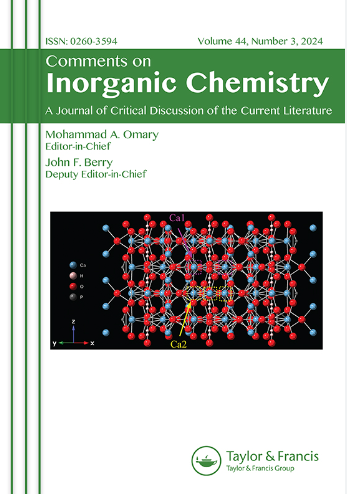Norman Sutin, Founding Editor of Comments on Inorganic Chemistry: A Remembrance and Tribute
IF 3.8
3区 化学
Q1 CHEMISTRY, INORGANIC & NUCLEAR
引用次数: 0
Abstract
Norman Sutin, a distinguished inorganic chemist who studied electron and charge-transfer reactions, died on January 31, 2022, at the age of 93. He was the founding editor of Comments on Inorganic Chemistry. Sutin pioneered the use of transition-metal complexes to study ground and excited-state reactions and to identify outer-sphere electron transfer reactions from other types of reactions. He was a master at using experiments to test theoretical descriptions of electron-transfer reactions, Figure 1. Sutin was born in Ceres, South Africa, on September 16, 1928. He was the third of three children and grew up in Paarl, an area northeast of Cape Town. In his late teens, he became interested in mysticism and meditation. During one meditation, he focused on how a candle burns. He believed this experience sparked his interest in how the exchange of different forms of energy can control chemical reactions. His initial work considered how energy released by radioactive decay controlled subsequent chemical reactions. Later, he studied how the thermal energy of the reactants controls rates of electron transfer between them, and then how absorption of light can provide the energy to drive a chemical reaction. Sutin received a bachelor’s degree with distinctions in Physics and Chemistry from the University of Cape Town (UCT) in 1948. He continued at UCT and received a master’s degree. He earned his doctorate in 1953 from Trinity College, Cambridge, in Alfred G. Maddock’s Radiochemistry group. He became friends with Dr. Garman Harbottle, a visiting scientist from Brookhaven National Laboratory (BNL), US. After a postdoc at Durham University, he moved to the United States and joined BNL as a Research Associate. He imagined Brookhaven as a bucolic area with green fields and诺曼·苏廷,无机化学评论的创始编辑:纪念和致敬
诺曼·苏廷,一位杰出的无机化学家,研究电子和电荷转移反应,于2022年1月31日去世,享年93岁。他是《无机化学评论》的创始编辑。Sutin率先使用过渡金属配合物来研究基态和激发态反应,并从其他类型的反应中识别外球电子转移反应。他擅长用实验来检验电子转移反应的理论描述,如图1所示。苏廷1928年9月16日出生在南非的谷神星。他在三个孩子中排行老三,在开普敦东北部的帕尔长大。在他十几岁的时候,他开始对神秘主义和冥想感兴趣。在一次冥想中,他专注于蜡烛是如何燃烧的。他相信这一经历激发了他对不同形式的能量交换如何控制化学反应的兴趣。他最初的工作是考虑放射性衰变释放的能量如何控制随后的化学反应。后来,他研究了反应物的热能如何控制它们之间的电子转移速率,然后是光的吸收如何提供驱动化学反应的能量。他于1948年获得开普敦大学(University of Cape Town, UCT)的物理和化学学士学位。他继续在UCT学习并获得硕士学位。1953年,他在剑桥大学三一学院阿尔弗雷德·g·马多克的放射化学小组获得博士学位。他与来自美国布鲁克海文国家实验室(BNL)的访问科学家Garman Harbottle博士成为了朋友。在英国杜伦大学(Durham University)获得博士后学位后,他移居美国,并加入英国国家实验室(BNL)担任研究助理。他把布鲁克海文想象成一个有着绿色田野和
本文章由计算机程序翻译,如有差异,请以英文原文为准。
求助全文
约1分钟内获得全文
求助全文
来源期刊

Comments on Inorganic Chemistry
化学-无机化学与核化学
CiteScore
9.00
自引率
1.90%
发文量
18
审稿时长
>12 weeks
期刊介绍:
Comments on Inorganic Chemistry is intended as a vehicle for authoritatively written critical discussions of inorganic chemistry research. We publish focused articles of any length that critique or comment upon new concepts, or which introduce new interpretations or developments of long-standing concepts. “Comments” may contain critical discussions of previously published work, or original research that critiques existing concepts or introduces novel concepts.
Through the medium of “comments,” the Editors encourage authors in any area of inorganic chemistry - synthesis, structure, spectroscopy, kinetics and mechanisms, theory - to write about their interests in a manner that is both personal and pedagogical. Comments is an excellent platform for younger inorganic chemists whose research is not yet widely known to describe their work, and add to the spectrum of Comments’ author profiles, which includes many well-established inorganic chemists.
 求助内容:
求助内容: 应助结果提醒方式:
应助结果提醒方式:


